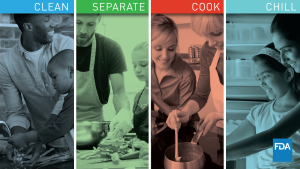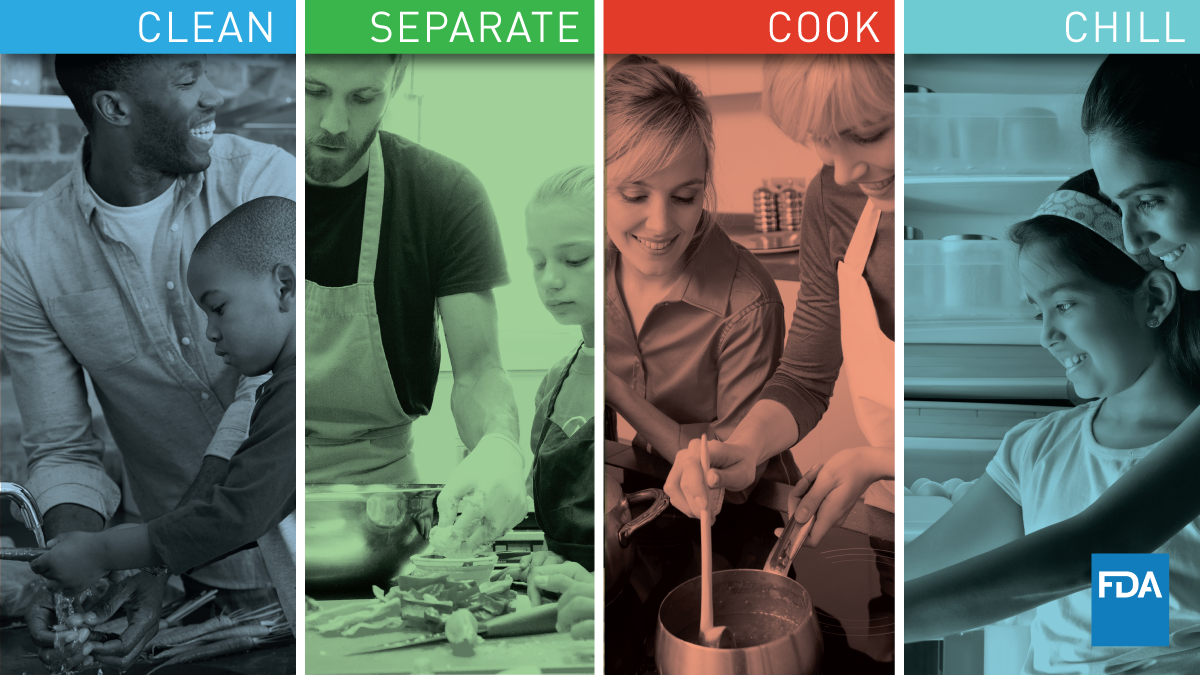 We’ve all had those times when our stomach doesn’t feel just right, often after eating. And often, that stomachache is no more than minor discomfort that lasts just a short time.
We’ve all had those times when our stomach doesn’t feel just right, often after eating. And often, that stomachache is no more than minor discomfort that lasts just a short time.
Even though the American food supply is among the safest in the world, an estimated 128,000 people each year require a hospital stay because of foodborne illness, resulting in about 3,000 deaths. Overall there are about 48 million cases of food poisoning in the U.S. each year, affecting one in six Americans.
With September designated as Food Safety Education Month, we want to make sure you have the tools to protect yourself and your family from foodborne illness.
People get food poisoning from swallowing food or beverages that have been contaminated with a germ or toxic substance. Contamination can occur anywhere along the food chain, from the field to the table. Potential contaminants include a variety of bacteria, viruses, and parasites.
Most foodborne illnesses happen suddenly and last for a short time. Symptoms may include cramping, nausea, vomiting, or diarrhea. Raw and undercooked meat, poultry and eggs are especially common as sources of foodborne illness. Other common sources are raw shellfish and unpasteurized milk.
What can you do to protect yourself, your family and friends? Following four simple steps can help.
- Clean your food before cooking to remove potential contaminants.
- Separate foods to prevent cross contamination. Don’t use the same utensils or cutting boards for uncooked chicken and other food items like vegetables you will eat raw, for example.
- Cook your food properly. A food thermometer will help you know that meat has been cooked thoroughly.
- Chill the leftovers to prevent bacteria from gaining a foothold.
Those most likely to have the most serious health concerns from foodborne illness, sometimes called food poisoning, are those younger than 5 or older than 65, as well as pregnant women and those with weakened immune systems from other diseases, chemotherapy, or dialysis. Those younger than 5 years of age who contract Salmonella are three times more likely to be hospitalized than adults. Among those older than 65, nearly half of those with a lab-confirmed foodborne illness from Salmonella, Campylobacter, Listeria or E. coli are hospitalized.
ADHS has a Foodborne Illness Surveillance Team that routinely monitors infectious diseases spread through food and aims to find and stop foodborne illness outbreaks. In partnership with public health partners throughout Arizona, the team of public health professionals accomplishes these goals by interviewing laboratory-reported cases, investigating outbreaks, and communicating with many partners.
In addition, the team provides educational and other resources, and collaborates with local health departments, state agencies, and federal partners such as the Food and Drug Administration (FDA) and Centers for Disease Control and Prevention (CDC) to promote food safety.
For additional information on foodborne illnesses, please check the CDC website.










